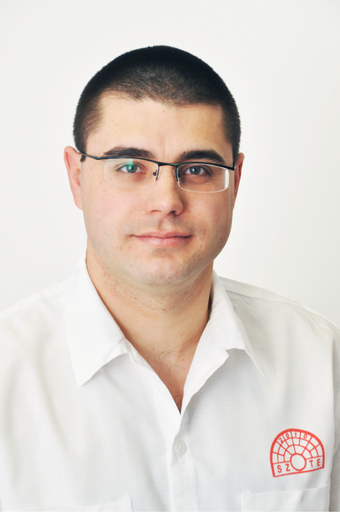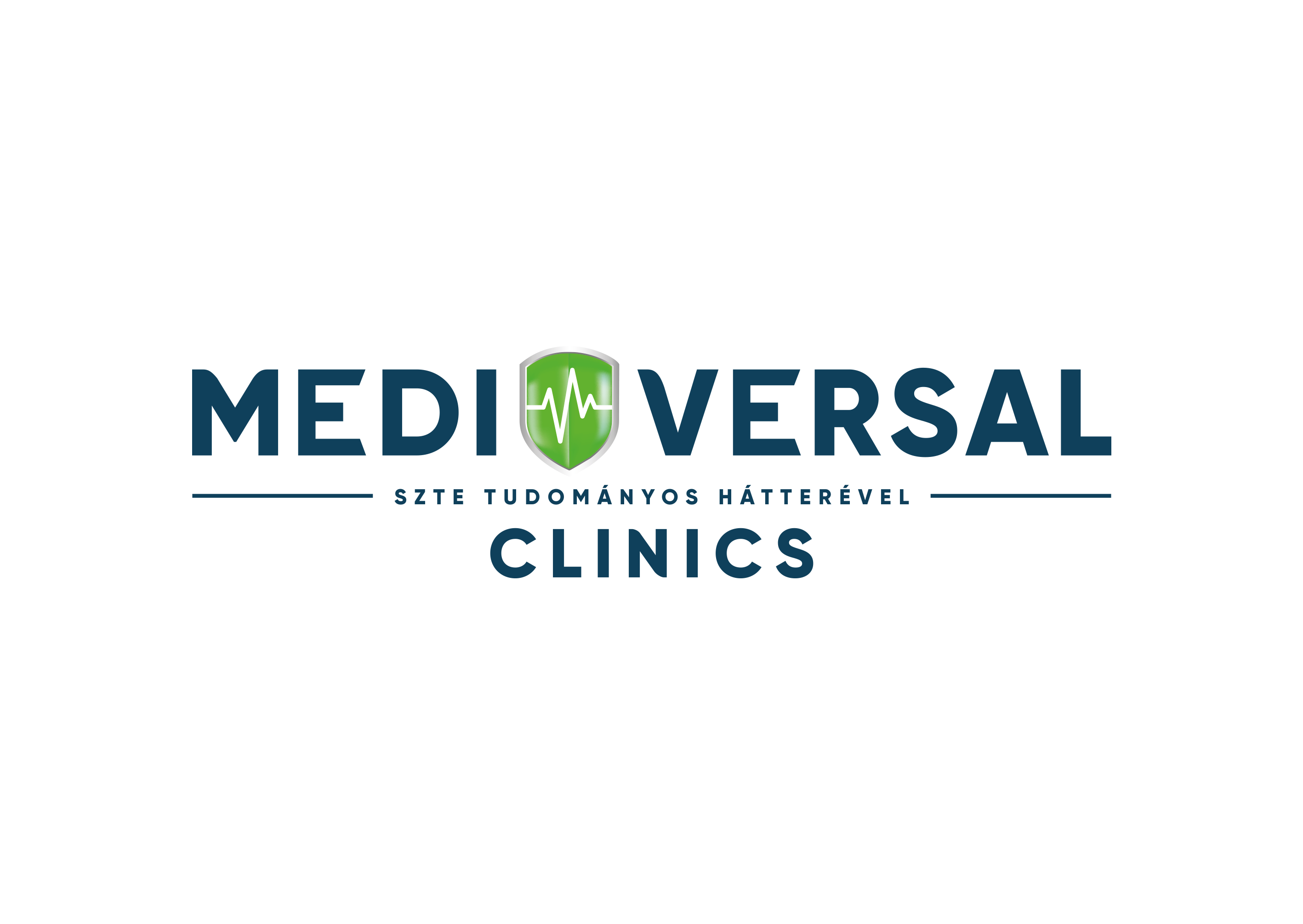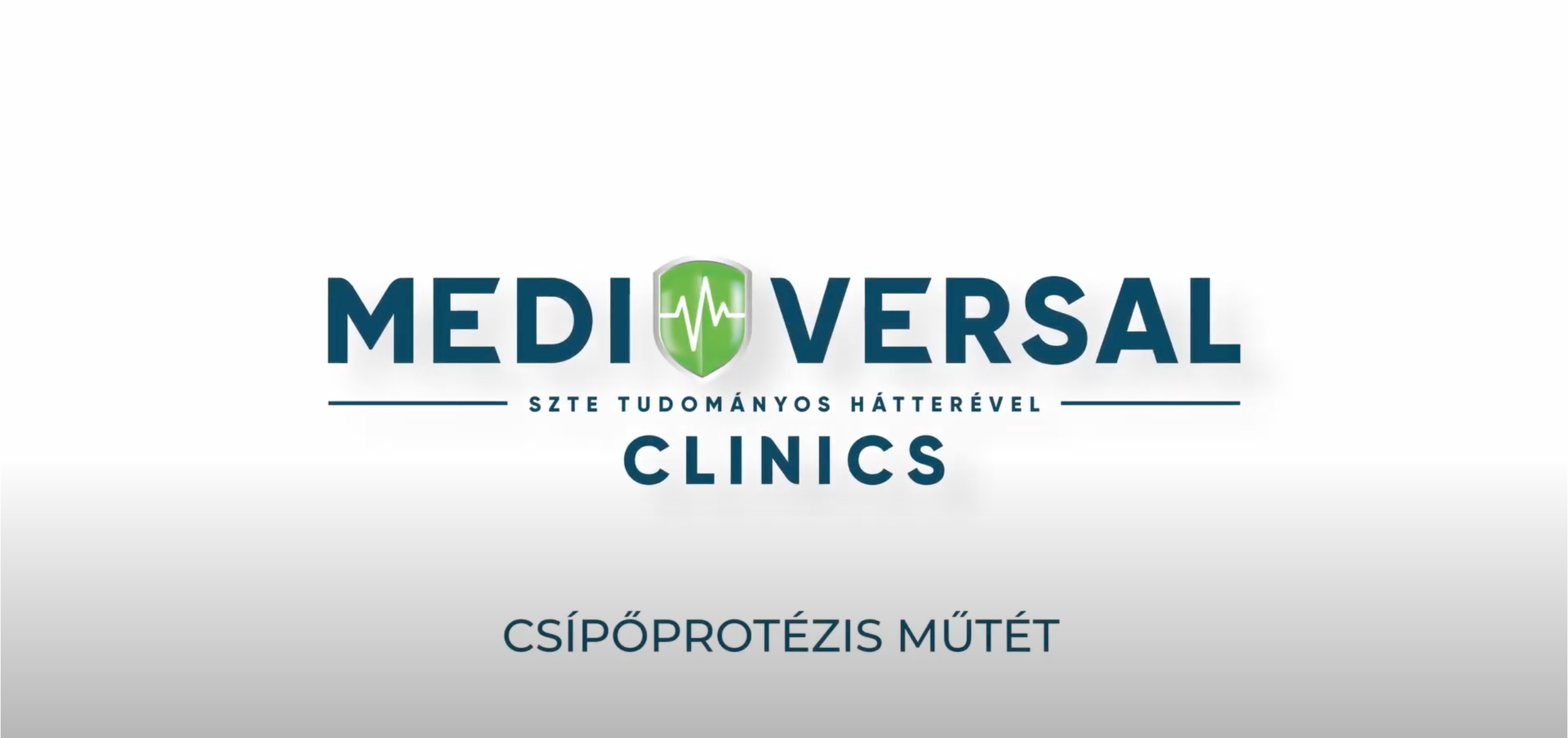Was this surgery recommended by your doctor? Some important information are summarized here about preparation for hip replacement surgery, process of the intervention and details of the postoperative care. Hip arthroplasty is currently one of the most successful interventions in medicine, it makes the hip joint pain-free and may significantly improve the previously limited range of motion.
Hip replacement surgery
Parts of a joint
The hip joint consists of the head of the thighbone (femur) and the cotyloid cavity of the hip bone (acetabulum). The round head of the thighbone fits into the cotyloid cavity, which has the shape of a hemispheric surface. Stability of the joint is provided by the joint capsule, ligaments, and muscles that move the joint. The smooth surface of the cartilage provides easy movement and decreases friction. Synovial fluid also contributes to easy movement, and nourishment of the cartilage.
About hip joint prosthesis implantation:
Hip joint prosthesis implantation is mainly for pain relief, and it is indicated when other non-surgical options have been tried but the pain cannot be controlled. Most commonly hip replacement surgeries may be needed in the following cases:
- Wear of the joint and the cartilage surface causing significant cartilage wear and tear called arthrosis.
- After fracture of the head or the neck of the thighbone.
- Necrosis of the head of the thighbone after a femoral neck fracture or other diseases (or spontaneous occurrence).
- Conditions after an injury (fracture of the rim or the cotyloid cavity, etc.).
Goal of this surgery is to restore normal function of the joint, thus to significantly improve quality of life of the patient. After the intervention, the patient usually quickly regains the ability to move and has significant pain relief.
Answers from the doctor – What do hip replacement surgeries look like?
How are hip replacement surgeries performed?
01
02
03
04
05
More information
How to prepare for surgery?
Even though hip replacement surgery is a routine intervention, its safe performance requires strict assessment of the patient. These assessments include laboratory and urine tests, and internal medicinal consultation and other consultations as necessary, according to the criteria set by the anaesthesiologist.
Blood transfusion may (rarely) be necessary during surgery or occasionally afterwards, as warranted by laboratory test results or patient symptoms. This may be autotransfusion, which option will be available for our patients with rare exceptions. In an autotransfusion, the patient’s own blood is taken (several weeks before the surgery), so whenever anaemia is detected postoperatively, the patient can receive their own blood.
If the intervention can be carried out according to the assessment results, the patient is hospitalized in the morning of the surgery, when a cannula is inserted into a vein, and also the potentially necessary blood is provided. This is a mandatory precaution.
You may have a light dinner before the surgery, but even fluid consumption is prohibited from midnight – except when you take your regular medicines with a sip of water. Our hip replacement surgeries are always carried out using antibiotic prophylaxis. At our department patients may take medicines dispensed by our nurses only.
For the success of the surgery and recovery, it is important that the patient observes all the preoperative requirements and prepares for the intervention.
What to do after a hip replacement surgery?
Postoperatively, on the day of the surgery (if the intervention was performed in the morning; or the next morning, if it was in the afternoon), the patient is able to sit on the side of the bed, stand up and start rehabilitation exercises with the help of a physiotherapist. Unless the surgeon instructs otherwise, the operated leg may be loaded until pain is observed, using an aid (usually a pair of elbow crutches).
Hospitalisation usually lasts for 3-8 days, mostly depending on the baseline condition. Removal of surgical stitches is performed 10-14 days after the surgery.
In the first three months following the implantation, certain movements and motions are forbidden (such as bending forward deeply, sitting on a low surface, sitting with the legs crossed, etc.). The patients are warned about these prohibitions both by the surgeon and the physiotherapist.
It is important to perform the learned physiotherapy exercises and do limb exercises until the pain limit both in the hospital and at home. This is essential for recovery. Use of an aid, as well as wearing compression stockings on the lower legs to prevent thrombosis is recommended in the first 6 weeks.
Follow-up examinations take place 6 weeks, then 1 year after the surgery, if there is no complication. Regular medical follow-ups support proper functioning of the prosthesis and full uneventful recovery of the patient.
What are the advantages of a hip joint replacement surgery?
Implantation of a hip prosthesis involves several advantages, including:
- Pain relief:One of the most important advantages is significant relief or cessation of chronic pain, a common symptom of hip joint problems.
- Improvement of limited mobility:The intervention improves mobility and takes away the previous limitations in range of motion, allowing for more free movements.
- Improved quality of life:Quality of life improves significantly after the surgery, since the patient will be able to perform the everyday task without pain or limitations.
- Active lifestyle:After the implantation, the patient can live a full life again, will be able to do sports with certain limitations, and regain the active lifestyle. With proper rehabilitation and physiotherapy, most of the patients regain their mobility and independence.
Thus, implantation of a hip prosthesis not only improves physical condition, but also the psychological and emotional wellbeing.
What are the risks of this surgery?
Hip replacement surgeries may involve the following risks:
- Haematoma: A haematoma may develop in the operated area.
- Blood loss: In case of significant blood loss, a transfusion may be necessary.
- Infection: Infection of the operated area, with approximately 1% frequency.
- Limb length difference: There may be a small difference between the length of the two legs.
- Loosening of the prosthesis: The prosthesis may get loose in time, which may be a result of the reaction to component wear.
- Bone fracture: The thighbone and the hip bone may break or crack at the time of prosthesis implantation.
- Muscle calcification: Calcification of the muscles around the hip may cause pain postoperatively, and may limit the range of motion.
- Dislocation of the prosthesis: Dislocation of the prosthesis may occur rarely, which needs to be replaced under general anaesthesia.
Despite these risks, hip replacement surgeries are generally successful and significantly improve the patient’s quality of life. The appropriate preparation and postoperative care help minimize the risk of complications.
Who is eligible for a hip replacement surgery?
The treating physician decides about a hip prosthesis implantation, based on prior test results and opinion of an anaesthesiologist. Factors affecting eligibility:
- Health status:General health status of the patient, including any chronic diseases.
- Pain and limitation of mobility:Intensity of the hip joint pain and decrease in ability to move.
- Non-surgical treatments:If conservative treatments were unsuccessful.
- Needs related to lifestyle:Everyday activities and quality of life of the patient.
Before the surgery, the patient has a comprehensive assessment, including laboratory and urine tests, and internal medicinal consultations as necessary. Opinion of the anaesthesiologist is especially important to assess the suitability for general anaesthesia. With the decision, the goal is to have the best possible result, improving the patient’s quality of life and ability to move.
Premium environment – Introducing our Clinic and wards
Have a look at our photo gallery, where you can get an insight into the modern wards at our Clinic and the comfortable environment we offer our patients. These photos show our state-of-the-art equipment, which facilitates faster recovery and more efficient rehabilitation. Take a virtual tour of our wards and become acquainted with the conditions that contribute to the high-level care and recovery of our patients.
Our doctors performing these surgeries:

Expertise
- Knee surgery
- Examination and treatment of acute and chronic musculoskeletal and joint diseases
- Examination and treatment of knee, hip, leg, shoulder, and spine pain, injuries, inflammation, and other complaints
Specialist services:
Paediatric and adult orthopaedic specialist care
Language skills
- English
- German

- Orthopaedic examinations
- Articular cartilage examinations
- Arthrosis treatment
- Screening and treatment (including surgical) of orthopaedic and musculoskeletal disorders in children
- Hip screening
- Hyaluronic acid injection treatment
- Lifestyle consultancy for musculoskeletal disorders
- Treatment of sports accidents and injuries
- Aftercare of old injuries and sprains
- Treatment of tennis and golfer’s elbow
- Treatment of lumbar and lumbar spine problems
- Arthritis anti-inflammatory injections
- Knee and hip joint endoprosthesis implantation
- Arthroscopic knee surgical procedures
- Leg and foot surgery
Language skills
- English
- German

- Orthopaedic examinations
- Articular cartilage examinations
- Arthrosis treatment
- Hip screening
- Lifestyle consultancy for musculoskeletal disorders
- Aftercare of old injuries and sprains
- Treatment of tennis and golfer’s elbow
- Treatment of lumbar and lumbar spine problems
- Arthritis anti-inflammatory injections
- Knee and hip joint endoprosthesis implantation
- Arthroscopic knee surgical procedures
- Leg and foot surgery

Expertise
- Examination and treatment of acute and chronic musculoskeletal and joint diseases
- Examination and treatment of knee, hip, leg, shoulder, and spine pain, injuries, inflammation, and other complaints
- Knee and hip replacement surgical procedures

- Diagnosis, treatment, and, if necessary, surgery of acute and chronic musculoskeletal disorders
- Hip replacement – implantation and replacement
- Knee replacement – implantation and replacement
- Knee arthroscopy for the treatment of meniscus and cartilage injuries
- Correction of forefoot deformities (bunions, hammer toe, etc.)
- Other lower limb bone and soft tissue surgery (removal of bone tumours, ganglions, etc.)
Specialist services:
Orthopaedic specialist care
Language skills
- English
- Spanish

- Orthopaedic examinations
- Infant hip screening
- Assessment and treatment of paediatric orthopaedic diseases
- Assessment and treatment of scoliosis in children (scoliosis, Scheuermann's disease)
- Osteoarthritis, arthrosis
- Hip and knee replacements
- Treatment of arthrosis and hip and knee joint inflammations
- Treatment of tennis and golfer’s elbow and carpal tunnel syndrome
- Treatment of sports accidents and injuries
- Examination of articular cartilage wear and cartilage and meniscus injuries
- Medial meniscus injuries
- Rheumatoid arthritis of the knee
- Injuries to knee ligaments and tendons
- Tear of the anterior cruciate ligament
- Aftercare of old injuries and sprains
- Lifestyle consultancy for musculoskeletal disorders
- Treatment of lumbar and lumbar spine problems
- Bunion osteotomy
Specialist services:
- Joint and limb bone complaints, inflammations, abrasions, and arthroses
- Limb pain
Language skills
- English

- Orthopaedic examinations
- Ízületi porckopás, artrózis kivizsgálása és kezelése
- Csípőprotézis beültetés
- Térdprotézis beültetés
- Artroszkópos térdműtétek
- Correction of forefoot deformities (bunions, hammer toe, etc.)
- Other lower limb bone and soft tissue surgery (removal of bone tumours, ganglions, etc.)
- Gyermek ortopédiai betegségek szűrése, kezelése és műtéti ellátása
- Infant hip screening
- Hialuronsavas injekció kúra, ízületi gyulladáscsökkentő injekciók beadása
- Mozgásszervi betegségek életviteli tanácsadás
- Treatment of lumbar and lumbar spine problems
Specialist services:
Orthopaedic specialist care
Language skills
- English

- Arthroscopia
- Korrekciós csontműtétek
- Nagy csontegyesítő műtétek
- Térdprotézis
- Csípőprotézis
- Keresztszalag plasztika BTB
- Térd és csípő TEP revízió
- Fémeltávolítás altatásban (csavar eltávolítás)
- Fémeltávolítás altatásban (lemez eltávolítás)
- Lágyrésztumor eltávolítás helyi érzéstelenítésben
- Lágyrésztumor eltávolítás altatásban
- Saját vér terápia (PRP)
- Optivisc Single ízületi infiltráció (1 ízület)
- Optivisc Single ízületi infiltráció (2 ízület)
- Kortizon infiltráció
Consultations
- Traumatology specialist care
Language skills
- German
- English

- Diagnosis, treatment, and, if necessary, surgery of acute and chronic musculoskeletal disorders
- Hip replacement – implantation and replacement
- Knee replacement – implantation and replacement
- Knee arthroscopy for the treatment of meniscus and cartilage injuries
- Correction of forefoot deformities (bunions, hammer toe, etc.)
- Other lower limb bone and soft tissue surgery (removal of bone tumours, ganglions, etc.)
Specialist services:
Orthopaedic specialist care
Language skills
- English

Expertise
- Pelvis injuries
- Small hand surgical procedures (e.g. ganglion, cracking finger)
- Treatment of knee injuries
- Knee and hip replacements
- Knee and hip TEP revision
- Arthroscopy (knee (meniscus)/shoulder)
- BTB plastic surgery (anterior cruciate ligament plastic surgery)
- LCA plastic surgery (anterior cruciate ligament plastic surgery)
- Corrective bone surgical procedures (e.g. Tomofix)
- Major bone replacement surgery
- Radius (wrist) surgery
- Removal of soft tissue tumours (e.g. cysts, ganglions on leg)
- Bunion osteotomy
- Metal removal by anaesthesia
Consultations
- Traumatology specialist care
Language skills
- English
- German

- Hand surgery and microsurgery
- Treatment of knee injuries
- Knee and hip replacements
- Knee and hip TEP revision
- Arthroscopy (knee (meniscus)/shoulder)
- BTB plastic surgery (anterior cruciate ligament plastic surgery)
- LCA plastic surgery (anterior cruciate ligament plastic surgery)
- Corrective bone surgical procedures (e.g. Tomofix)
- Major bone replacement surgery
- Radius (wrist) surgery
- Removal of soft tissue tumours (e.g. cysts, ganglions on leg)
- Bunion osteotomy
- Metal removal by anaesthesia
Consultations
- Traumatology specialist care
Language skills
- English

- Examination and treatment of musculoskeletal and joint diseases
- Radius (wrist) surgery
- Small hand surgical procedures (e.g. ganglion, cracking finger)
- Shoulder arthroscopy
- Knee arthroscopy
- Collarbone surgery
- Cubital tunnel syndrome surgery
- Carpal tunnel syndrome surgery
- Tennis elbow surgery
- Metal removal by anaesthesia
Consultations
- Traumatology specialist care
Language skills
- English
- Serbian
- Croatian
- German

- Examination and treatment of knee surgical problems
- Performing minimally invasive arthroscopic surgical procedures
- Knee ligament replacement
- Prosthetic knee interventions
- Examination and treatment of sports surgery problems
- LCA plastic surgery
- Metal removal
The aim is to provide professional traumatology care to patients and achieve maximum patient satisfaction.
Language skills
- English
- German

About our clinic
Mediversal Egészségügyi Szolgáltató Kft. is a private healthcare facility owned entirely by the University of Szeged. Thanks to our unique clinical background, the outpatient and inpatient care we provide and the laboratory and imaging diagnostics we offer are performed by internationally renowned specialists in their fields who are at the forefront of research and innovation, supported by highly experienced staff. In addition to the excellent professional staff, our well-equipped facilities, quality hotel services, and, first and foremost, the customer-centric, personalised care we provide guarantee a complete healing experience.
Make an appointment

